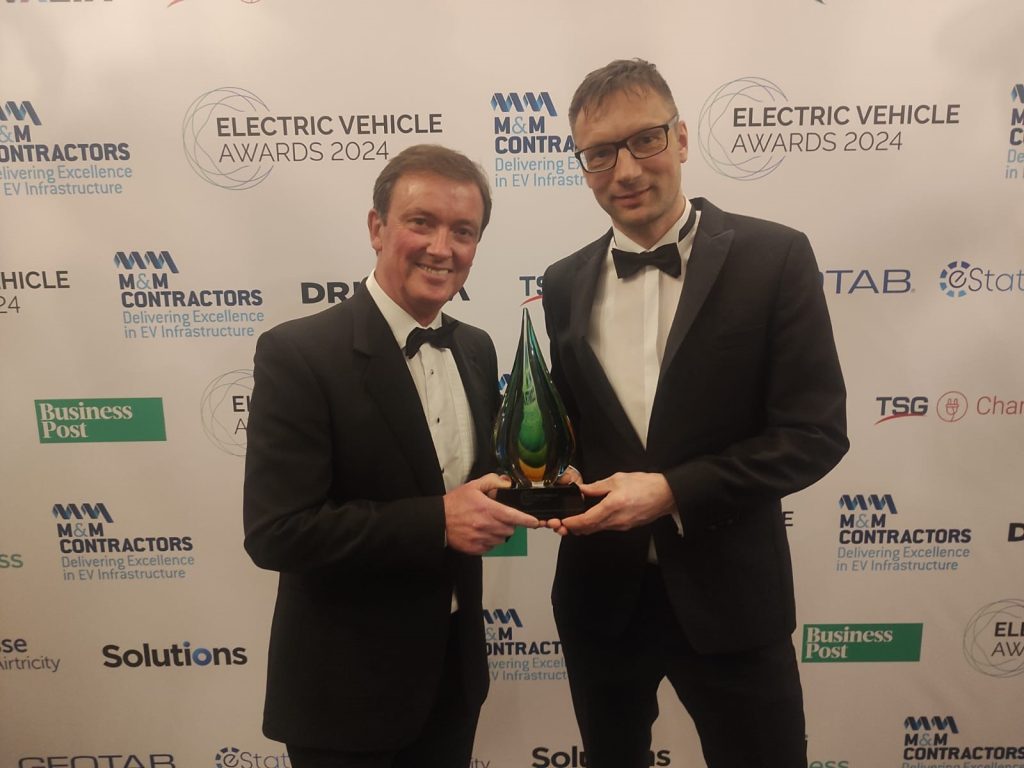News & FAQ's
GEV Technologies Win EV Finance, Insurance and Payments Solution of the year 2024

Our Team attended the National Construction Summit 2024 in April

F.A.Q.
Commonly asked Questions
contact sales@glenev.com for more information
There are massive advantages associated with the move to EV’s, from lower fuel costs, greater employee retention, lower emissions and a reduced carbon footprint, all this is also supported by government grants . Businesses can also avail of accelerated capital allowance scheme, reduced tolls, VRT relief, and significantly lower running costs.
Charging at home is a much easier and cost-effective solution. If you’re signed up to a night rate electricity plan at home, you can take advantage of this and choose to charge your car overnight for a lower electricity rate. It is important however to check in with your electricity provider what tariff you are on and to shop around for the cheapest one.
If you are looking to get a charger installed in your home or apartment block please reach out to sales@glenev.com
These regulations mean that charging infrastructure must be put in place in:
- new dwelling houses with a parking space located within the boundary of the dwelling
- new multi-unit residential buildings
- multi-unit residential buildings undergoing major renovation where the car park is located inside or adjacent to the building, and where renovations include the car park or the electrical infrastructure of the building or car park
This is largely affected by the size of the battery in your vehicle. However the fast charging DC stations in public areas such as forecourts can deliver a full charge in up to 30 minutes. Depending on the size of your battery it can take a home charger anywhere from between 3 and 8 hours to deliver a full charge.
No, there’s a variety of chargers and stations used to power the battery in an EV. There are two main types of connectors, known as Type 1 and Type 2. We would recommend that car owners buy a portable charging cable that matches their vehicle’s Type 1 or Type 2 socket. In doing this they can charge on any public networks
As with everything the costs are established on a number of variables that can change from home to home. Contact us at sales@glenev.com to get a full breakdown of costs and the grants that can be leveraged against these.
There are many ways that you can charge your vehicle across a number of locations.
- Home Charging
Having a charger installed at your home is a fantastic idea. Making it much easier and cheaper to charge especially when you consider using the night rate to charge your vehicle. GEV also offer a billing solution whereby if you drive a company car the company can pay for your home charging directly without the damage ever hitting your electricity bill.
We would recommend our Easee Charger for home charging – offering a slick and technologically advanced solution.
There are a variety of grants available for those looking to get a home charger installed at home. (SEAI)
- Public Charging
In Ireland, there are currently around 1,900 public chargers at 800 sites. This is going increase year on year. Rates for charging at public stations vary, with rapid chargers costing more.
- Workplace Charging
Workplace charging is a fantastic solution for fleets and businesses where you can charge throughout the day. We offer some fantastic solutions for Charging in the workplace, if you are an employer looking to install charge points please contact us at sales@glenev.com
- Using a three-pin plug socket at home
Known as a ‘granny charger’, this is the slowest method of charging your EV. Most electric vehicles will come with a cable like this on purchase. They are great in times of absolute necessity and we would always recommend keeping yours with you as you travel. These chargers fit a 3 pin plug socket that is in all homes. It is important to note that these chargers are not suitable for your primary charging method, because standard sockets are not ideal for supplying high levels of power over a long duration of time.
There are numerous ways that you can pay for your charging:
- Home electricity bill
- In App payment
- Pay as you go
If you are a home user you can see your usage on our GEV Top Up app, on your electricity bill or on your chargers app.
